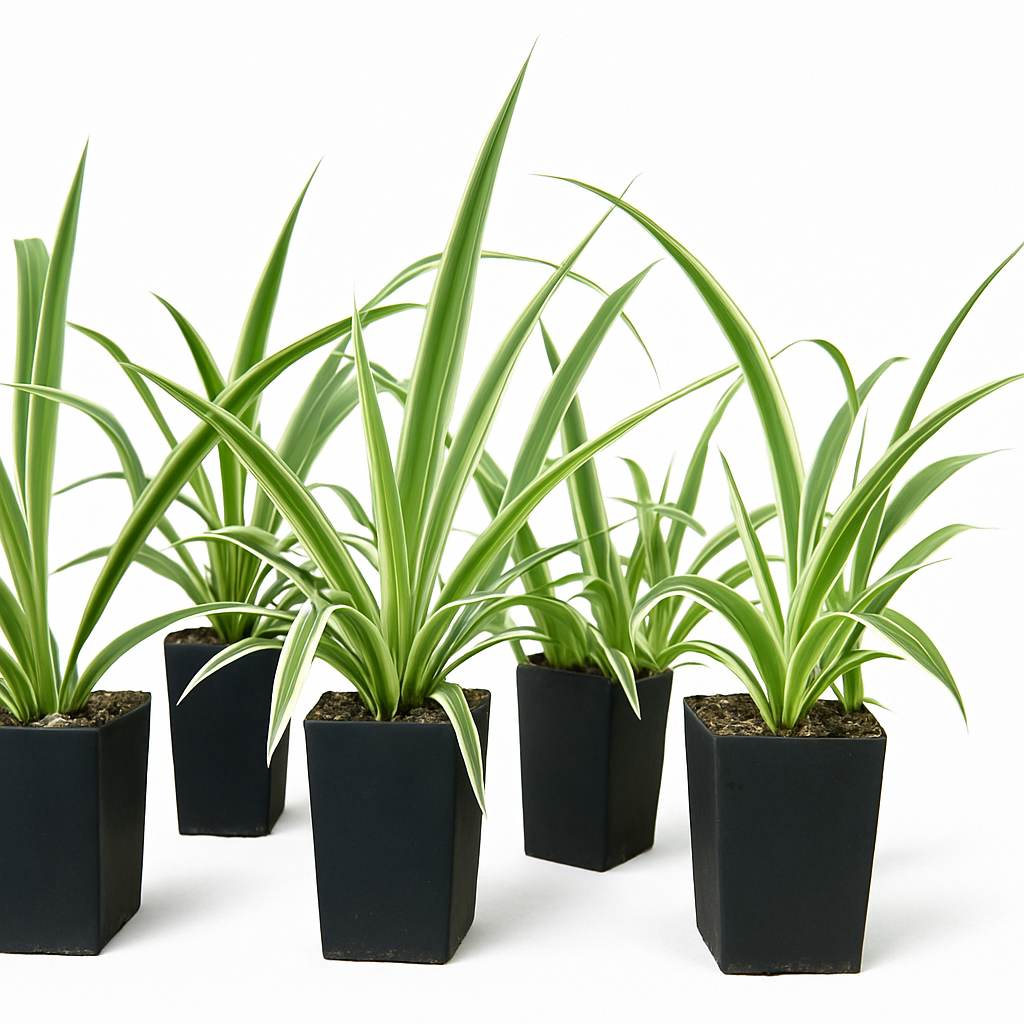
Chlorophytum: Fresh Air with Easy Care
Want to enjoy the benefits of fresh, clean air without the hassle of high-maintenance care?
The Chlorophytum, also known as the Spider Plant, is an ideal choice. With its elegant, arching foliage and proven air-purifying properties, it adds natural beauty, wellness, and a sense of calm to any home or office space.
| Attribute | Description |
|---|---|
| Scientific Name | Chlorophytum comosum |
| Common Name | Spider Plant |
| Family | Asparagaceae |
| Type | Evergreen, herbaceous perennial |
| Growth Habit | Rosette-forming with arching, strap-like leaves and spreading stolons |
| Mature Size | Up to 50 cm (20 in) tall and wide indoors |
🌿 Benefits of Chlorophytum (Spider Plant)
✅ Low Maintenance: Ideal for beginners—this plant is extremely forgiving and thrives with minimal care.
✅ Fast Growing: Produces baby offshoots that are easy to propagate and share.
✅ Pet-Friendly: Non-toxic to cats and dogs, making it a safe choice for pet-loving households.
✅ Air-Purifying Power: And perhaps most impressively, the Spider Plant has been scientifically recognized for its ability to improve indoor air quality.
🧪 Backed by NASA's Clean Air Study (1989), spider plants were shown to remove up to 90% of indoor air pollutants like formaldehyde within 24 hours.
🌿 How Chlorophytum Purifies the Air
Chlorophytum comosum (Spider Plant) cleans the air by absorbing harmful airborne chemicals through tiny pores on its leaves known as stomata. These natural openings allow gas exchange, and they serve as entry points for volatile organic compounds (VOCs) commonly found in indoor environments.
🚩 Pollutants Absorbed by Spider Plants:
-
Formaldehyde – Commonly released from furniture, plywood, insulation, and cleaning agents.
-
Xylene – Found in paints, varnishes, and solvents.
-
Carbon Monoxide – Often present due to gas stoves, heaters, or poor ventilation.
-
Toluene & Benzene – Released from glues, paints, cigarette smoke, and detergents.
🧬 What Happens After Absorption?
Once these pollutants are absorbed:
-
Cellular breakdown: Plant enzymes inside the leaf tissues help metabolize or neutralize toxins.
-
Storage or transformation: Some compounds are stored safely in plant tissues or transformed into non-toxic organic molecules.
-
Rhizosphere contribution: Pollutants may also move down to the root zone, where soil microbes further break them down—a process known as rhizodegradation.
🪴 Chlorophytum (Spider Plant) Comprehensive Care Guide
| Care Aspect | Details |
|---|---|
| Light | Bright, indirect light is ideal. Tolerates some shade but may lose variegation. |
| Watering | Water weekly; allow the top 2–3 cm of soil to dry between waterings. |
| Soil | Well-draining, peat-based potting mix or general-purpose indoor mix. |
| Humidity | Average household humidity is fine; appreciates occasional misting. |
| Temperature | Prefers 18–27°C (65–80°F); keep away from cold drafts and frost. |
| Fertilizer | Feed monthly in spring and summer with a balanced liquid houseplant fertilizer. |
| Pruning | Trim brown tips and remove old leaves; cut off spiderettes if overgrown. |
| Repotting | Every 1–2 years or when roots become crowded or outgrow the pot. |
| Propagation | Easy via plantlets (spiderettes); root in water or soil. |
| Pests | Watch for spider mites, aphids, or mealybugs—treat with insecticidal soap. |
🌿 Styling Tips for Your Spider Plant
-
Use hanging baskets to highlight its trailing foliage and create vertical interest.
-
Place on shelves to bring a fresh, natural accent to your workspace or living area.
-
Set on plant stands to give it height and make its lush greenery a focal point in any room.
Shop Now
🌱 Add Chlorophytum to Your Cart